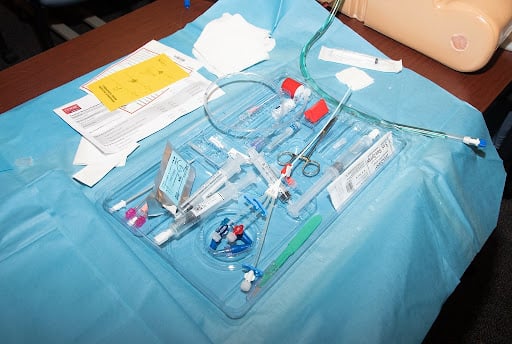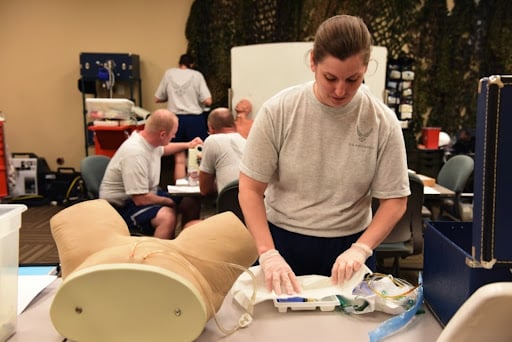Introduction: The Importance of Catheter Training
In the ever-evolving landscape of healthcare, few skills are as foundational yet continually relevant as catheter training. But why is this seemingly straightforward procedure so critical? The answer is multifaceted and deeply rooted in the core principles of healthcare—patient safety, effective treatment, and ethical practice. Catheters serve as vital tools in a plethora of medical scenarios, from the administration of life-saving drugs to the drainage of bodily fluids in emergency situations. Their utility is indisputable, but so are the risks associated with improper usage.

The stakes are high. Incorrect catheterization can lead to a host of complications, including urinary tract infections, blood infections, tissue damage, and even sepsis—a life-threatening condition. Beyond the physical repercussions, there are also legal and ethical dimensions to consider. Inadequate training can result in malpractice lawsuits, tarnishing the reputation of healthcare institutions and professionals. Moreover, the emotional and psychological impact on patients can be devastating, eroding the trust that is fundamental to the patient-caregiver relationship.
Therefore, mastering the art and science of catheterization is not merely an optional skill but a mandatory competency for healthcare professionals. This comprehensive guide aims to serve as your roadmap, covering everything from the basics to advanced techniques. Whether you’re a seasoned medical practitioner looking to refresh your knowledge or a healthcare student eager to learn, this article is designed to equip you with the skills and understanding you need to excel in catheter training. So, let’s delve into this critical aspect of healthcare, where expertise can mean the difference between relief and suffering, between competence and negligence, and sometimes, between life and death.
The Basics of Catheterization
Types of Catheters: So, what are the different types of catheters? The most commonly used are Foley catheters, intermittent catheters, and external catheters. Each serves a unique purpose and requires specific training for safe and effective use.
Sterilization Techniques: Sterilization is the cornerstone of safe catheter use. Methods include autoclaving, chemical sterilants, and even advanced UV techniques. Knowing when and how to use each method is crucial for preventing infections.
Insertion Methods: Inserting a catheter is a skill that demands precision and care. Techniques vary depending on the type of catheter and the patient’s condition. Mastery of insertion methods minimizes the risk of complications and enhances patient comfort.
Advanced Catheter Techniques
Catheter Maintenance: How do you maintain a catheter once it’s in place? Regular cleaning and inspection are vital. Additionally, healthcare providers must know how to identify and address common issues like blockages or leaks.
Troubleshooting: What do you do when things go awry? Troubleshooting skills are essential for quickly resolving issues like catheter migration, leakage, or patient discomfort.
Special Cases: Pediatric and geriatric patients, as well as those with certain medical conditions, may require specialized catheter care. Being well-versed in these special cases ensures that all patients receive the best possible care.
Training Programs and Certifications
Online Courses: The internet is a treasure trove of catheter training resources. From video tutorials to interactive modules, online courses offer flexibility for busy healthcare professionals.
In-Person Training: Nothing beats hands-on experience. In-person training programs often include simulations and real-life case studies, providing invaluable practical experience.
Certifications: Why should you get certified? Certification not only enhances your resume but also assures patients and employers of your expertise in catheter care.
Best Practices in Catheter Care
Patient Comfort: Ensuring patient comfort goes beyond mere professionalism; it’s a moral obligation. Effective communication and gentle handling can make a world of difference.
Infection Control: Infections are a major concern in catheter care. Strict adherence to sterilization guidelines is non-negotiable.
Documentation: Accurate and timely documentation is not just a bureaucratic requirement; it’s a legal necessity. Proper records can protect both the patient and the healthcare provider in case of complications.

Legal and Ethical Considerations
Consent: Informed consent is a legal and ethical prerequisite for any catheterization procedure. Understanding the legal framework around consent can protect healthcare providers from legal issues.
Patient Rights: Patients have the right to dignity, privacy, and quality care. Respecting these rights is not just ethical but also enshrined in law.
Legal Framework: Being aware of the legal landscape surrounding catheter use can protect healthcare providers from potential litigation. This includes understanding malpractice laws and the legal consequences of negligence.
Conclusion: The Road Ahead in Catheter Training
As we reach the end of this comprehensive guide, it’s essential to recognize that the journey towards mastering catheter training is ongoing. Medical science is not static; it’s a dynamic field that continually evolves, driven by technological advancements, clinical research, and a deeper understanding of human physiology and pathology. As healthcare professionals, the onus is on us to keep pace with these changes, continually updating our skills and knowledge.
But why is this so crucial? Because at the heart of all medical practice is the well-being of the patient. As practitioners, we wield the power to alleviate suffering, to restore health, and in some cases, to save lives. This power comes with immense responsibility, a responsibility that can only be met through rigorous training and a commitment to excellence. Catheter training, though a specific skill, serves as a microcosm of this broader commitment. It’s not just about inserting a tube; it’s about ensuring that every action we take is guided by expertise, ethics, and empathy.
So, what’s next? The road ahead is paved with opportunities for learning and growth. Whether it’s through advanced certifications, specialized courses, or hands-on clinical experience, the avenues for enhancing your catheter training skills are numerous. This guide serves as a stepping stone, an initiation into the complex yet rewarding world of catheter care. But remember, a stepping stone is just the beginning. The path ahead is long, filled with challenges and opportunities alike. Are you ready to walk it? Are you prepared to commit to the continuous learning and unyielding excellence that this journey demands? If the answer is yes, then the future of healthcare is brighter because of professionals like you.
------------Read More
By: Alexander Joe
Title: Mastering the Basics and Beyond: Comprehensive Catheter Training for Healthcare Professionals
Sourced From: marketbusinessnews.com/mastering-the-basics-and-beyond-comprehensive-catheter-training-for-healthcare-professionals/347447/
Published Date: Fri, 15 Sep 2023 03:47:41 +0000
Did you miss our previous article...
https://trendinginbusiness.business/business/house-painting-services-are-usually-needed-when-purchasing-a-new-home
.png)





